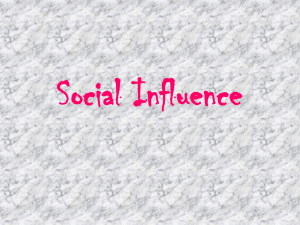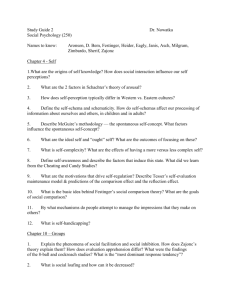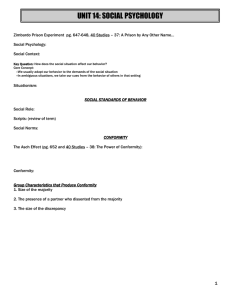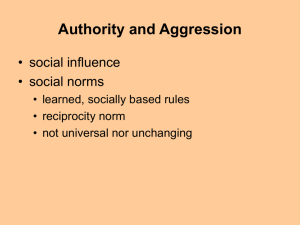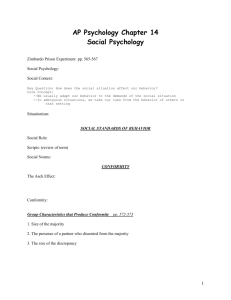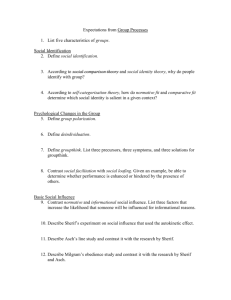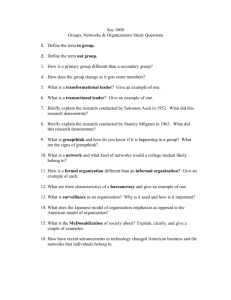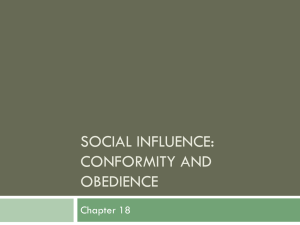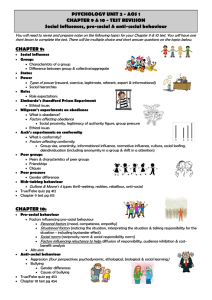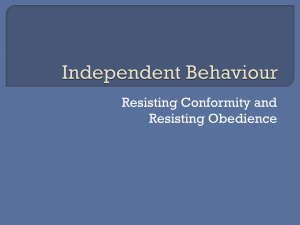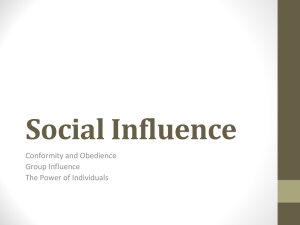Work Groups and Teams
advertisement
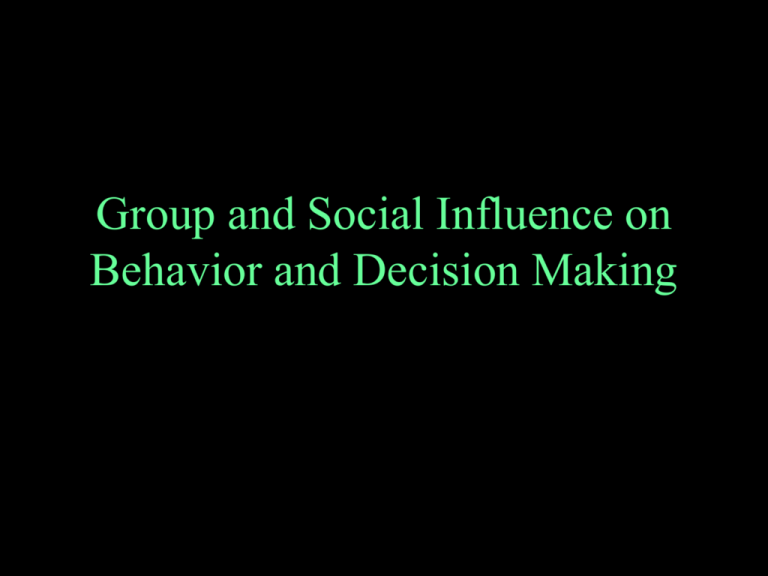
Group and Social Influence on Behavior and Decision Making Group Roles “All the world’s a stage, And all the men and women merely players; They have their exits and their entrances And one man in his time plays many parts” Shakespeare • Refers to a notion of public behaviour (rules, norms, expectations) that the person believes is appropriate for the sitation and his or her position in it Role Playing Three Categories • Self oriented roles – motivated mainly to fulfill personal needs; tend to be less productive • Group-maintenance roles – Help members to work well together • Task-facilitating roles – Help members solve the problem or make the decision Self-Oriented Controlling GroupMaintenance Encouraging Task Facilitating Initiating Withdrawing Harmonising Attention Seeking Diverting Compromising Information giving or seeking Coordinating Procedure setting Group Norms • Shared attitudes, opinions, feelings, or actions that guide behaviour 1.) an agenda for acceptable behaviour 2.) provide roles 3.) group survival – suppress and reject deviants 4.) provide identification – gives group cohesion Conformity Occurs when individuals adopt the attitude or behaviour of others because of real or imagined pressure to do so + Conforming to group norms allows groups to function effectively - Conformity pressures can sometimes make us act against our better judgement Asch Studies – 1950s Conducted conformity experiments on group influence • Groups of 7 (6 accomplices and one subject) • Instructed his accomplices to answer incorrectly on 12 of the 18 trials • Subjects conformed 35% of the time Asch’s Conformity Experiment Key factors influencing conformity 1. Group size As groups grow larger conformity increases – to a point – Conformity increased as group size went from 2 to 4 and peaked at 7 2. Group unanimity – Presence of one dissenter lowered conformity Zimbardo’s Prison Experiment (1971) www.prisonexp.org Degradation Procedures deloused prisoners as they do in this Texas prison photograph Zimbardo’s Prison Experiment • Tendency to conform to the expected social roles for guards and prisoners • Degree to which roles shape attitudes and behaviour Obedience: The Power of Authority • Obedience: – Form of compliance that occurs when people follow direct commands from someone in a position of authority Stanley Milgram’s Obedience Studies (1963) • 65% (26/40) adminstered all 30 levels of shocks. Highest level was up to 450 volts, a shock of fatal intensity • Subjects focused on approval of authority figure rather than the pain they inflicted on the victim Milgram’s Studies • Obedience increased when: 1.) authority figure was near the subjects 2.) when the victim was less visible and less audible to the subject 3.) when the experiment was conducted in a prestigious university Milgram’s Studies Conclusion: “our actions are determined less by the kind of people we are than by the kind of situation we are in” • We don’t lose sense of morality but we start to focus on how well we are living up to the expectations of the authority figure Criticisms • Subjects who agree to participate in a scientific experiment expect to obey orders – Milgram’s response: So do soldiers and bureaucrats in the real world who are accused of terrible acts performed in obedience to authority • Ethics – Milgram used extensive deception Social Influence on Behaviour • Presence of others can influence our behaviour – even when not attempting to do so - “choking under pressure” – because of elevated self-consciousness Bystander Effect • Individuals are less likely to provide needed help when others are present than when they are alone • Tendency to seek help declines as number of bystanders increased – – Occurs in ambiguous situations – Diffusion of responsibility – expecting others to take responsibility Decision Making in Groups Group Cohesiveness • Refers to the strength of the bonds that link group members to one another and to the group itself + communicate more and participate more - increases pressure to conform Perceived threat increases group cohesiveness Groupthink • When members of a cohesive group emphasise concurrence at the expense of critical thinking in arriving at a decision • A deterioration of mental efficiency, reality testing and moral judgement that results from in-group pressure Examples of groupthink • • • • Bay of Pigs Escalation of the Vietnam War Space shuttle challenger Failure to prepare for the invasion of Pearl harbor Existing conditions that could lead to groupthink • • • • • High cohesiveness Insulation of group Lack of methodical procedures Directive leadership High stress with low degree of hope for finding better solution Groupthink Symptoms • Illusion of group invulnerability • Rationalisation/suppression of non-supporting data • Belief in inherent morality of group • Stereotyping of “out groups” • Pressure on deviants to conform • Illusion of unanimity • Self appointed mind guard – Tries to shield group from information that contradicts the group’s view Groupthink Preventitive Steps • • • • • • • Leader encourages expressions of doubt Leader accepts criticisms of own ideas High status members speak last Recommendations from duplicate group Divide into sub groups from time to time Invite objective outsiders Assign devils advocate role
